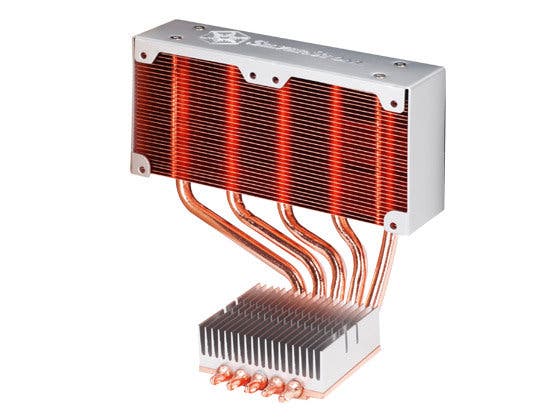How to Build Your Own Gaming PC
An idiot's guide.
3. Embrace your ignorance
Decide how much money you'd like to spend on this enterprise. For my recent PC build I set a budget of $900, which is the equivalent of about £25.50 or, in the imminent post-economic-apocalypse landscape, a tooth.
Don't worry too much about that budget at first. Just start piling motherboards and other junk into your cart while staying in the ballpark of your ideal figure. Maybe you end up with a computer worth two teeth. That's OK. Dream a little.
After you've pretend-splurged, whittle things back down under budget. Don't mourn the high-end kit you have to delete from your cart because - I can't emphasise this enough - you were never going to notice the difference anyway.
See, as you research PC components, a strange thing will happen. You, a person who stands there picking chunks of raw cookie dough from the tube without even closing the refrigerator door, will come to believe that you have the expert discernment of an audio-visual engineer. "This 6850 video card won't do at all," you'll harrumph, "a person of my taste requires the 6950."
No, you don't. Richard Leadbetter can tell the difference between the graphics power of the 6850 and the 6950, probably with his eyes closed. You and me, we can't. MAYBE if we run a side-by-side demo. By the way, never do this.
Don't run benchmark software, either, because it makes a little chart with little bars on it, and then you compare the length of your bar to the bars that people have posted on the internet, and all of a sudden it's gym class 1996 all over again.

Your ignorance is an enormous asset. It saves money and preserves fun. Build something that works nicely within your budget, and then forget that anything else ever existed. If you still find yourself tempted by the high-end, keep in mind the great equaliser: no matter how much you spend on your PC, in a few years it will be junk.
Beware. People will try to undermine your bliss. Last weekend I mentioned to my brother, a PC-building enthusiast, that I had put together my own computer.
"I think I have an extra video card that you could use," he said.
"Nah, that's OK," I said.
"Are you sure? It's probably faster than the one you have. I think it's a 9500," he said.
"Oh, mine is a 9600," I said, and he relented.
Lesson: If you ever get into a conversation with someone about your PC's specs, lie. Specifically, take the last number mentioned in conversation and add 100. When the interlocutor asks about a 3.3 GHz Intel i5 processor, casually offer that you have the 103.3 GHz Intel i105 processor. If questioned further, say, "You know, the new one." Then place a large quantity of food in your mouth and walk away.
The truth is, I don't remember what the model number of my video card is. All I know is everything looks real pretty.
On to the components, then.
4. The case
The case is the hulking plastic box into which you will cram the computer's innards. To decide on a case style, it's time for another ultra-short questionnaire:
Do you have dignity?
A. Yes
B. No
If you answered "A," just get an inoffensive black / grey case and be done with it.
If you answered "B," ask somebody who answered "A" to pick a case for you.
"Case style" is an oxymoron. No one is going to find your computer stylish. It's a wheezing box of circuitry. Midnight-blue LED spotlights, transparent side panels and garish paint jobs aren't going to change that. They only compound the embarrassment.
(Confession: I think the see-through panel is a neat idea, but I've never seen a windowed case that didn't look like it was designed by a 12 year-old sketching in the margins of his geometry textbook.)
Because you will reuse it for future builds, choosing a case is the PC-building equivalent of getting a tattoo. A blinged-out dork-box is the equivalent of a rainbow-unicorn tramp stamp. While you might convince yourself that it's cool right now, it is a time bomb of regret.
By the same token, a boring grey-rectangle case is like a little heart tattoo by your ankle: still not so tasteful, but whatever.








